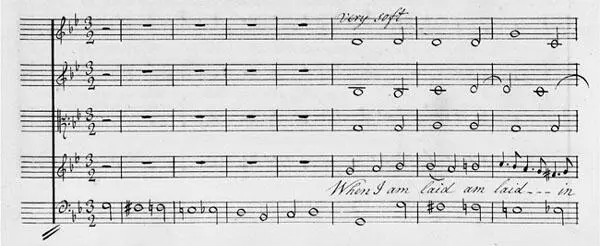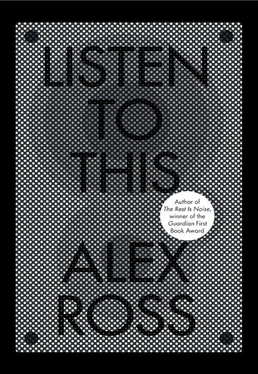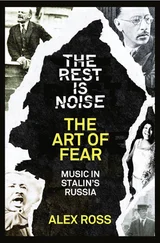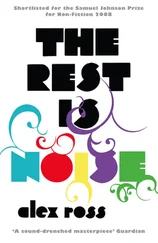English chaconnes, too, assumed both light and dark shades. The restoration of the English monarchy in the wake of Oliver Cromwell’s republican experiment called for musical spectaculars in the Lully vein, replete with sumptuous dances of enchantment and reconciliation. Several exquisite specimens came from the pen of Henry Purcell, the leading English composer of the late-seventeenth century. In his semiopera King Arthur, nymphs and sylvans in the employ of an evil magician attempt to lure the hero king with a gigantic passacaglia on a Lamento della ninfa bass. Purcell’s The Fairy Queen, a very free adaptation of A Midsummer Night’s Dream, culminates in a decorous, Lullyesque chaconne titled “Dance for Chinese Man and Woman.” (The play ends in a not very Shakespearean Chinese Garden.) In works of more intimate character, Purcell often reverted to the lachrymose manner of Dowland and other Elizabethan masters. The lamenting chromatic fourth worms its way through the anthem “Plung’d in the confines of despair” and the sacred song “O I’m sick of life.”
In 1689 or shortly before, Purcell produced the most celebrated ground-bass lament in history: “When I am laid in earth,” Dido’s aria at the end of the short opera Dido and Aeneas. Could Purcell have known Cavalli’s Didone? Probably not, but he did make unforgettable use of the same chromatic-ostinato device that Cavalli implanted in Hecuba’s song. Purcell takes care first to introduce the bass line on its own, so there is no mistaking its expressive role. This is from an eighteenth-century copy:

The notes are like a chilly staircase stretching out before one’s feet. In the fourth full bar there’s a slight rhythmic unevenness, a subtle emphasis on the second beat (one-two-three). You can hear the piece almost as an immensely slow, immensely solemn chaconne. Nine times the ground unwinds, in five-bar segments. Over it, Dido sings her valediction, a blanket of strings draped over her:
When I am laid in earth, may my wrongs create
No trouble in thy breast,
Remember me, but ah! forget my fate.
The vocal line begins on G, works its way upward, and retreats, with pointed repetitions of the phrases “no trouble” and “remember me.” Dido’s long lines spill over the structure of the ground, so that she finds herself arching toward a climactic note just as the bass returns to the point of departure. First she reaches a D, then an E-flat. With the final “remember me” she attains the next higher G, the “me” falling on the second beat. When the song is done, there is a debilitating chromatic slide, undoing, step by step, the effort of the ascent. The ostinato of fate seems triumphant. Yet Dido’s high, brief cry is the sound we remember—a Morse-code signal from oblivion.
Bach’s Ciaccona for unaccompanied violin, a quarter-hour-long soliloquy of lacerating beauty, stands at such a distance from the hijinks of the Spanish chacona that the title seems almost ironic. With its white-knuckle virtuosity, its unyielding variation structure, and its tragic D-minor cast, this is a piece from which la vida bona appears to have been banished utterly. Yet the ghost of the dance hovers in the background. The image of Bach as a bewigged, sour-faced lawgiver of tradition has caused both performers and listeners to neglect the physical dimension of his work. To hear the Ciaccona played on the guitar—there are richly resonant recordings by Andrés Segovia and Julian Bream—is to realize that bodily pleasure has its place even in the blackest corners of Bach’s world.
Bach made his name as an organist, joining a starry lineage of northern European organ players that went back to the Dutch composer Jan Pieterszoon Sweelinck (1562–1621). Sweelinck, in turn, drew on the tortuous chromatic techniques of late-Renaissance Italy and Elizabethan England. In his Fantasia chromatica, Sweelinck subjects a descending chromatic figure and two companion themes to various contrapuntal manipulations, forming a spidery mass of intersecting lines. The finger-twisting brilliance of the writing is held in check by a taut tripartite scheme: in the first third, the theme proceeds at a regular tempo; in the second, it is slowed down; in the third, it goes faster and faster still. Such music marks the beginning of the Bachian art of the fugue.
The organists of the German Baroque, who included Dietrich Buxtehude and Johann Pachelbel, embraced the practice of “strict ostinato,” in which a short motif repeats in the bass while upper voices move about more freely. (The inescapable Pachelbel Canon is an ostinato exercise in a lulling major key.) The interplay between independent treble and locked-in bass acquires additional drama when the bass lines are bellowed out on the organ’s pedal notes—sixteen- and even thirty-two-foot pipes activated by the feet. Bach’s Passacaglia in C Minor, a looser kind of ostinato piece, begins with the bass alone, in a pattern that winds upward from the initial C before spiraling down an octave and a half to a bottom C that should be heard less as a note than as a minor earthquake. Bach was especially attracted to bass lines that crawled along chromatic steps. One of these shows up in the third movement of the playful little suite Capriccio on the Departure of a Beloved Brother, one of Bach’s earliest extant works. In the 1714 cantata “Weinen, Klagen, Sorgen, Zagen,” a corkscrew chromatic bass portrays the “weeping, wailing, fretting, and quaking” of Christ’s followers.
When, in 1723, Bach took up the position of cantor at St. Thomas School in Leipzig, he pledged that his music would be “of such a nature as not to make an operatic impression, but rather incite the listeners to devotion.” In employing Italian opera devices such as the lamento bass, he might have been trying to sublimate them, taming a dangerously sultry form. A man of religious convictions, Bach wrote in the margins of his favorite Bible commentary that music was “ordered by God’s spirit through David” and that devotional music showed the “presence of grace.” At the same time, though, his arioso melodies had the potential to undermine the austerity of the Lutheran service; even if he never wrote an opera, he displayed operatic tendencies. He presumably understood these contradictions, and possibly relished them. His comment about the “presence of grace” pertained to a faintly occult description of music-making at the Temple, in the second book of Chronicles: “It came even to pass, as the trumpeters and the singers were as one, to make one sound to be heard in praising and thanking the Lord … The house was filled with a cloud, even the house of the Lord.”
The Ciaccona for solo violin, which Bach composed in 1720 as part of his cycle of Sonatas and Partitas, possesses something like that ominous, cloudlike presence. It takes the form of sixty-four variations on a four-bar theme in D minor, with each four-bar segment generally repeated before the next variation begins. But the melodic strands of the opening bars—both treble and bass—disappear for long stretches as Bach explores new material. The “theme” is really a set of chords, framing limitless flux. (The copy reproduced on the previous page was probably made not long after Bach’s death.) Lament figures crop up throughout, sometimes plainly presented and sometimes hidden in the seams. A D-major middle section functions as a respite from the prevailing gloom of the piece, yet the apparition of a descending chromatic line high in the treble hints that these brighter days won’t last. Soon after, D minor returns, with a four-note lament motif planted firmly in the bass—the shade of “Fors seulement,” Lachrimae, and Lamento della ninfa.
Читать дальше













